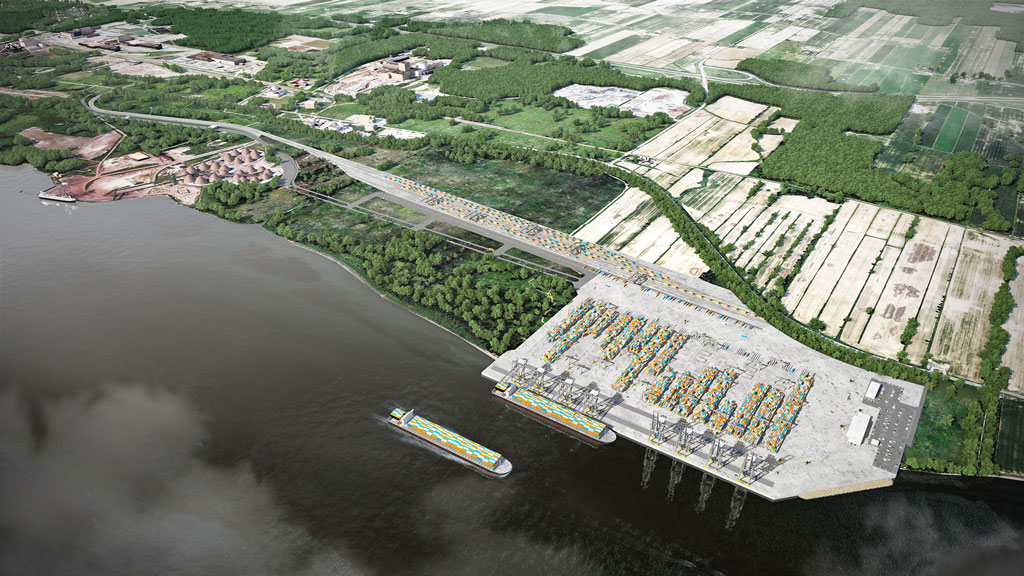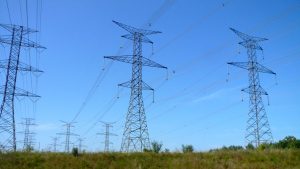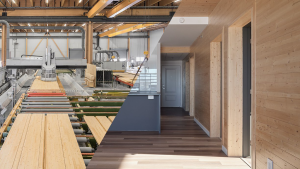As the Port of Montreal moves forward with an ambitious $335-million investment plan to beef up its infrastructure, the environment, decarbonization and sustainability remain very much top of mind.
An extensive five-year plan released recently by the port outlines a series of infrastructure improvements.
Authorities also intend to increase container handling capacity of the port while living up to their stated commitment to reduce the carbon footprint of activities and the supply chain.
The Montreal Port Authority (MPA) intends to build more sustainable infrastructure that will also accommodate trade growth and accelerate the decarbonization of port activities. To that end, the port is electrifying its fleet of service vehicles and will be rolling out large-scale electric power systems.
The port has already created a landscaped embankment 8.5 metres tall and planted 2,000 trees to minimize any visual and noise impacts of port activities.
“The Port of Montreal is at the forefront of decarbonization,” MPA president and chief executive officer Martin Imbleau said at the opening of a climate summit in the city. “Ramping up the fight against climate change and accelerating decarbonization are not only moral obligations, but also opportunities to innovate, invent new solutions and stand out.”
The Strategic Plan 2023-2027 for the port released in May outlines key objectives for decarbonization, climate change adaptation and land protection to achieve carbon neutrality by 2035.
The plan covers GHG emissions for which the MPA is fully responsible, such as rail operations on its intermodal network, management of its buildings and vehicle fleet as well as its infrastructure work. The MPA intends to reduce GHG emissions by 55 per cent by 2030, leading to carbon neutrality by 2035.
The strategy also covers GHG emissions for which the MPA is not fully responsible, such as those generated by logistics companies located on port territory. The plan is to reduce those emissions by 40 per cent by 2040, leading to carbon neutrality by 2050.
A range of measures are being implemented or scaled up and new energy practices are to be adopted. More sustainable fuels will be used and the port will reduce emissions from trucks and trains in collaboration with the MPA’s partner companies.
There will also be a focus on greater protection of biodiversity on territories managed by the MPA. Thirty per cent of the territories under auspices of the MPA will be protected as a national wildlife area.
To improve the resilience of infrastructure, $10 million will be invested over the next five years in city-port interface projects to improve the way logistics activities coexist with the urban environment.
The port is approaching its full container handling capacity and authorities want to invest heavily in its infrastructure, which stretches 26 kilometres between Cité-du-Havre and the east end of the island.
The new site will have container capacity of 1.15 million Twenty-foot Equivalent Units, or TEUs, with two berths, a rail yard and connected services.
In addition to the landscaped embankment, the port has already installed shore power for wintering ships and cruise ships. Future plans by the port include rollouts of more electric power systems and developing green fuels.
Substations will also be improved to enable the port to meet a growing demand for electrical energy. Six kilometres of rail track will be added to improve the fluidity of rail traffic and storage, and the wharf will be modernized.
Concurrently, the Port of Montreal intends to invest in an expansion in Contrecoeur to ensure sufficient infrastructure for importers and exporters throughout Quebec. The expansion will consist of construction of a large terminal and facilities.
The Contrecoeur project is set to begin at the end of 2023, with gradual commissioning of facilities expected to start in late 2026.
“Our biggest challenge will be decarbonizing our economy and the supply chain,” Imbleau said. “Transportation is the largest emitter of GHGs in Quebec, and the stats aren’t getting any better. Our responsibility as a player in this industry is indispensable.
“The east end of Montreal offers great opportunities. It was the cradle of port activities. It can and must support supply-chain decarbonization.”
Imbleau said the port is the eastern gateway to the heart of the country and Quebec’s logistics ecosystem makes it possible to import and export containerized goods to meet close to 75 per cent of the country’s industrial capacity.
“Recent crises show that capacity is needed,” said Imbleau. “Building capacity to our future terminal will enable us to meet growing demand, providing a seamless and cost-effective solution to meet business needs, specifically to Europe and the Indo-Pacific region.”







Recent Comments